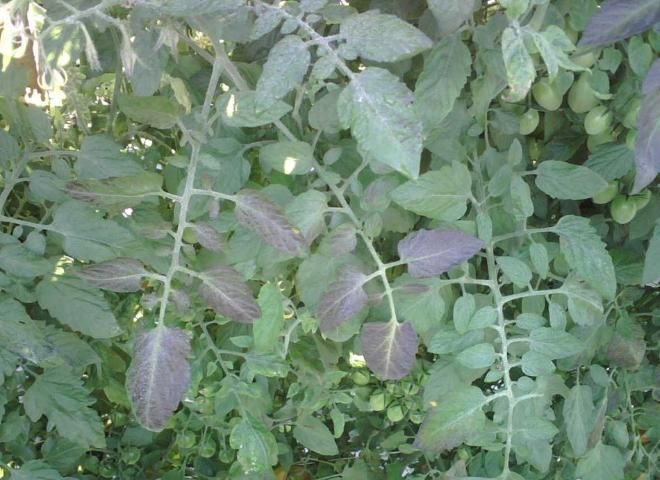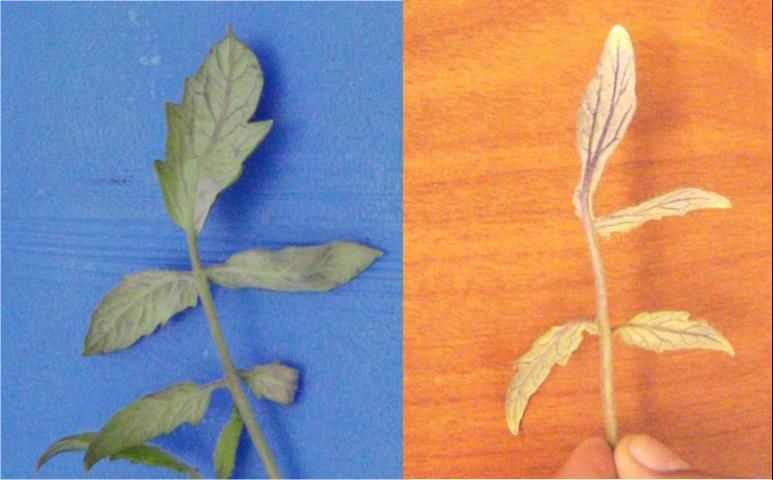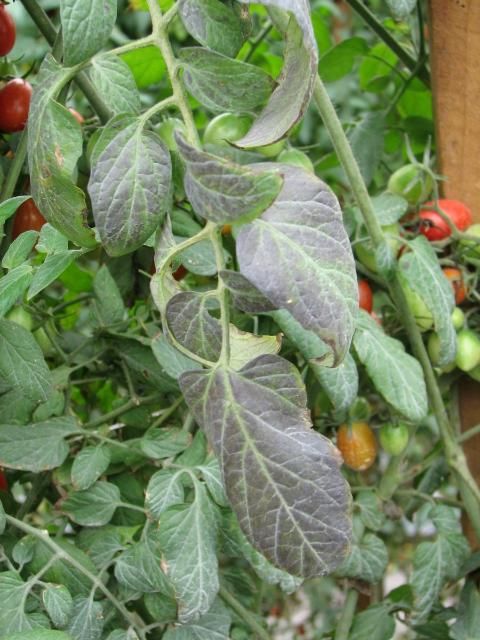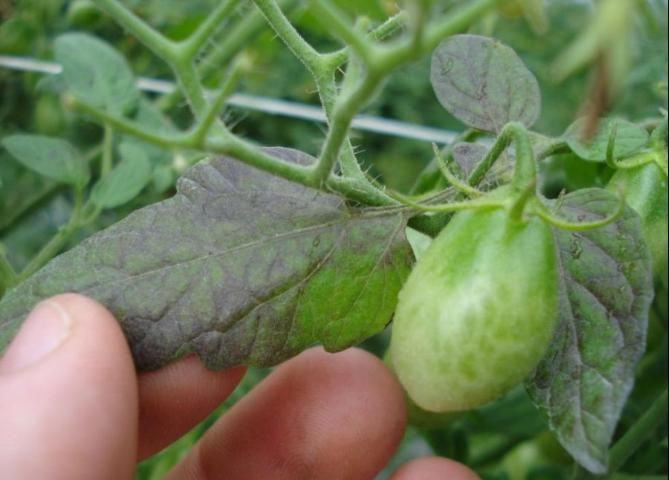Symptoms and Field Distribution
The tomato purple leaf disorder (TPLD) has been observed in several tomato fields in Hillsborough, Manatee, and Miami-Dade counties since 2006. Initial symptoms appear between six and eight weeks after transplanting and could be somewhat confused with mild phosphorus (P) deficiency. However, nutritional analysis of leaves obtained from three affected locations revealed normal values for all essential nutrients, including P.
The key diagnostic difference between TPLD symptoms and the symptoms of P deficiency is that symptoms of P deficiency first appear on the lower leaf surface, causing vein purpling, and then extend to the whole leaf. By contrast, TPLD tends to appear primarily on the upper leaf surface, without affecting the veins, and gradually spreads to the entire leaf surface (Figures 1, 2, and 3).



Often, when one leaf overlaps another, TPLD only develops on the surface portion exposed to sunlight, with the shaded leaf tissues remaining green (Figure 4). No deformation or bronzing of the affected leaves has been observed. Instead, these leaves appear to senesce prematurely (Figure 5). This disorder can occur in all types of cultivated tomatoes (i.e. grape, cherry, round and Roma types), but the severity of the damage appears to vary among types and cultivars. The effect of TPLD on yield is unknown.


Field distribution of TPLD remains a subject of further research. However, some preliminary data were collected from affected fields in South Florida to determine the incidence and distribution of the disorder. At 11 weeks after transplanting, the incidence of TPLD was less than 1 percent (one or two plants per 600 feet of row). However, four weeks later, incidence in the same field increased to more than 90 percent. An adjacent field under the same management practices, which was four weeks younger than the previous one, exhibited mild TPLD infestation with less than 25 percent incidence. No clear pattern of distribution was observed with respect to incidence within a bush or a row or in relation to the prevailing sun and wind direction. Further studies need to be conducted to confirm these observations.
Tests for known pathogens of tomato using standard microbiological, serological, and nucleic acid-based methods were negative. However, preliminary studies suggest that TPLD is caused by an infectious agent, like a virus or viroid. The mechanism of transmission is still unknown. As new information emerges, subsequent articles and fact sheets will follow to update the industry on findings and recommendations.